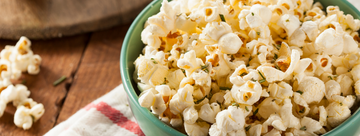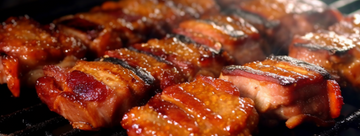

The Plant
Its wispy and feathery branches makes Dill a pretty easy plant to spot. Plus, it can get pretty tall (up to 5ft) and has a tendency to sprawl out so it's not exactly the most subtle of plants. Typically Dill blooms in summer months but if you want to use it for your cooking you’ll want to harvest your Dill before its flowers start to appear (they are yellow btw). Once they show up, the Dill’s delicious flavour starts to become more and more bitter so probably won't be the best choice to put in your (normally) showstopping Homemade American Ranch Dressing TM. But what's really cool about Dill is the fact that both the leaves and seeds of the Dill plant are edible and have plenty of Vitamin A, Vitamin C and Magnesium!The History
Alright, let's just get the Latin out of the way early. Dill’s scientific name is Anethum Graveolens. The word Anethum is a little boring (simply meaning flowering plant) but Graveolens, is a combination of the words gravis (heavy) and oleo (to emit a smell). Put it all together Anethum graveolens means a strongly smelling flowering plant which yeah, that’s how I’d describe Dill too.
The word Dill comes from the old Norse ‘Dylla’ meaning to soothe. Which again makes sense, as Dill has a bunch of medicinal uses but I’m getting ahead of myself. For more info on that jump down to the Cultural Impact section below.
In terms of location, the earliest mentions of dill date back over 5000 years ago to early Egypt and the surrounding Mediterranean. There is also archaeological evidence that the Babylonians grew Dill in their gardens during 3000 BC!! Which… is a while ago. And boy did these ancient cultures love their Dill! The Greeks believed it to be a sign of future good fortune, the Romans considered it to be a good luck charm and the Egyptians saw it as an aphrodisiac. It was such a highly valued herb that it has been taxed or tithed throughout history in a wide variety of cultures.

The Dill crazy spread through Europe like wildfire in cooking and medicine alike. It reached widespread popularity in England in the 17th century, mostly in kitchen herb gardens. It then travelled to America with the new settlers which is how it eventually ended up in your famous Homemade American Ranch Dressing TM thousands of years later.
Cultural Impact
Okay, you’ve waited patiently (or not if you’ve jumped ahead). While Dill has been used in cooking for millennia, it’s big cultural impact is its inclusion in medical herbalism throughout history. Dill is actually really good for you and has been used for medicinal purposes for thousands of years. It has antispasmodic properties (calms muscle spasms) and carvacrol (believed to help with digestion). It is believed that Dill can help calm nerves and muscles, settle the stomach, ease inflammatory pain from conditions like arthritis and even cure hiccups (although that one I’m unsure of – hiccups can only reliably be scared out of me). Within Ayurvedic medicine, Dill has been used in over 56 preparations focused on antiflatulence, aiding in digestion and increasing the rate of urine.
Dill also soothes colic pain in infants and was also given to children to calm their digestion and suppress appetite. It is said that American Puritans used to give their children Dill seeds to chew on during mass so they didn’t get hungry halfway through (and had the added bonus of making their breath smell amazing).
Taste Pairings
As you can use both parts of the Dill plant, we should probably talk about part what goes with what food. The seeds can be pretty strong and fragrant so picking the right flavour combos can be crucial. Chuck it in a FinaPod MAX and grind over:
- Honey-roasted carrots
- Flatbreads
- Caramelised apples
- Quiche
- And lentils, lentils, lentils!!
Dill leaves’ kinda anise, kinda parsley flavour is super light and fresh flavour making it absolutely perfect for summer. I would recommend using dill leaves in:
- Summer Salads
- Soups like borscht
- Creamy Dips like Tzatziki
- Chicken Skewers
- Any kind of seafood dish really
- (And of course your very own fabulous American Ranch Dressing TM)



